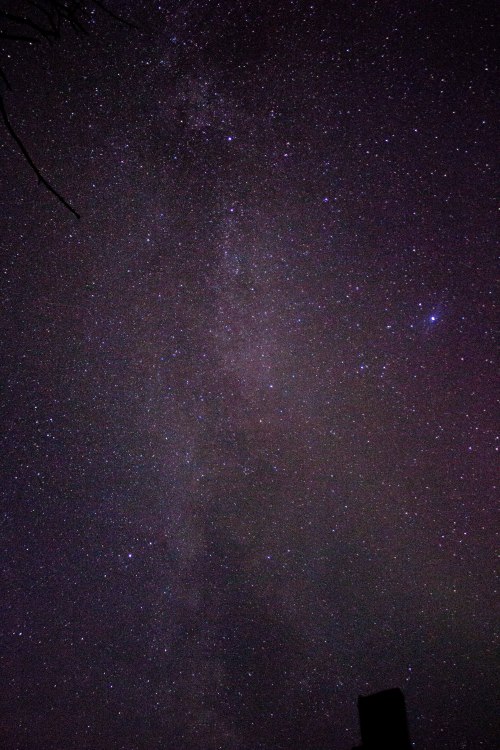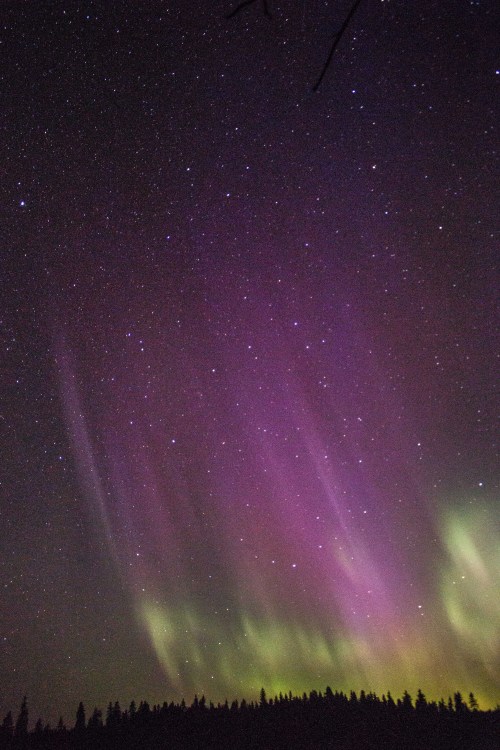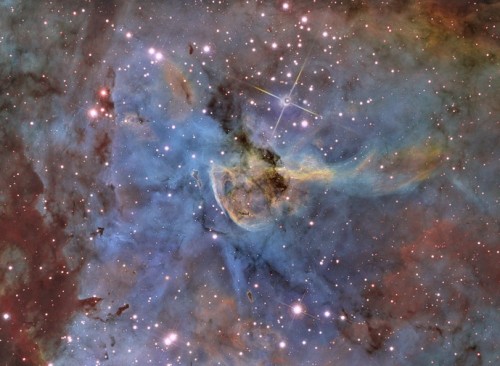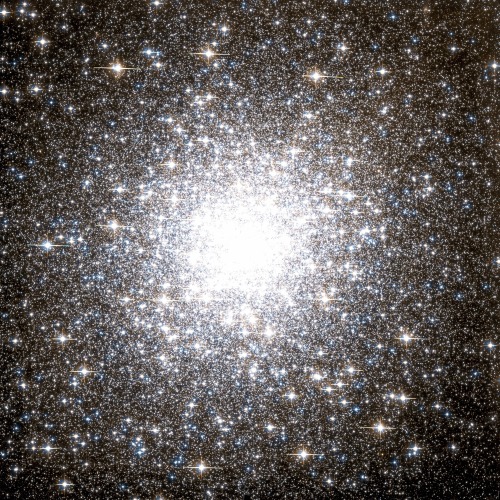M63, Sunflower Galaxy

M63, Sunflower Galaxy
More Posts from Littlecadet-biguniverse and Others

47 Tucanae


The Department of Awesome Natural Phenomena has features amazing auroras before, but never an aurora on another planet! This extraordinary sight, brought to us by the NASA/ESA Hubble Space Telescope, is an incredibly colossal aurora taking place on Jupiter:
“At the gas giant’s north pole, the most powerful and luminous northern lights in the solar system shimmer and glow in an endless geomagnetic storm that’s larger than our entire planet.”
That’s right, Jupiter itself is already so awesomely huge that its auroras are larger than the planet Earth.
Watch this time-lapse video of the Jupiter auroras and then visit the Hubble website to learn more about this amazing phenomena.
[via Twisted Sifter and Gizmodo]

Galaxy Trio Arp 286:
NGC 5566 (bottom), NGC 5569 (left), & NGC 5560 (center)


Northern lights over Nyrölä, Finland. My cousin called me last night and said “There’s no clouds over the Central Finland and it’s very dark.”. And so we drove at midnight 30 miles out of the city to get these photographs. It was magical. -Eero

Spiral galaxy NGC 4911 in the Coma Cluster
js

The Spider and the Fly - IC 417
NASA’s Spitzer Space Telescope floats ~93 million miles from earth as it silently observes our universe. In this image we see the nebula IC 417, located in the constellation Auriga, about 10,000 light-years away. Star formation is occurring rapidly in this nebula.
“A cluster of young stars called “Stock 8” can be seen at the top. The light from this cluster carves out a bowl in the nearby dust clouds, seen here as green fluff. Along the sinuous tail in the center and to the bottom, groupings of red point sources are also young stars.”
Credit: NASA/JPL

Eta Carinae and Keyhole Nebula (NGC 3324), inside the Carina Nebula (NGC 3372)

The Running Chicken Nebula.
Image Credit & Copyright: Andrew Campbell

150,000 Stars - The Messier 2 Star Cluster
This massive Star Cluster (The Messier 2 Star Cluster) is 13 billion years old - making it one of the oldest star clusters in the Milky Way Galaxy. Not only is this Star Cluster ancient, it is one of the largest known star clusters. On a clear night away from light pollution, you can see M2 with the naked eye as a faint blur in the constellation Aquarius.
Credit: NASA/Hubble/SIMBAD Astronomy db
-
 sleepymr liked this · 4 years ago
sleepymr liked this · 4 years ago -
 laoban77 liked this · 5 years ago
laoban77 liked this · 5 years ago -
 jim-noble liked this · 6 years ago
jim-noble liked this · 6 years ago -
 casualcreationsandwich liked this · 7 years ago
casualcreationsandwich liked this · 7 years ago -
 podunk73-blog liked this · 7 years ago
podunk73-blog liked this · 7 years ago -
 low-q-uality liked this · 7 years ago
low-q-uality liked this · 7 years ago -
 skysnow9 liked this · 7 years ago
skysnow9 liked this · 7 years ago -
 faef4efae reblogged this · 8 years ago
faef4efae reblogged this · 8 years ago -
 chimnotkim-blog liked this · 8 years ago
chimnotkim-blog liked this · 8 years ago -
 caetanogcj-blog liked this · 8 years ago
caetanogcj-blog liked this · 8 years ago -
 comet-crazy-blog reblogged this · 8 years ago
comet-crazy-blog reblogged this · 8 years ago -
 unobservable-universe-blog reblogged this · 8 years ago
unobservable-universe-blog reblogged this · 8 years ago -
 starshine-sunlight-blog liked this · 8 years ago
starshine-sunlight-blog liked this · 8 years ago -
 gamer45245blog liked this · 8 years ago
gamer45245blog liked this · 8 years ago -
 soupdinner-blog reblogged this · 8 years ago
soupdinner-blog reblogged this · 8 years ago -
 dead-telepath-blog reblogged this · 8 years ago
dead-telepath-blog reblogged this · 8 years ago -
 compostablefeelings liked this · 8 years ago
compostablefeelings liked this · 8 years ago -
 carelesscost reblogged this · 8 years ago
carelesscost reblogged this · 8 years ago -
 crystalwitch-in-the-tardis reblogged this · 8 years ago
crystalwitch-in-the-tardis reblogged this · 8 years ago -
 ishiganto liked this · 8 years ago
ishiganto liked this · 8 years ago -
 grayladyofthewell reblogged this · 8 years ago
grayladyofthewell reblogged this · 8 years ago -
 grayladyofthewell liked this · 8 years ago
grayladyofthewell liked this · 8 years ago -
 angelswoon liked this · 8 years ago
angelswoon liked this · 8 years ago -
 megapurplebouquetninjafan liked this · 8 years ago
megapurplebouquetninjafan liked this · 8 years ago -
 perrawacha reblogged this · 8 years ago
perrawacha reblogged this · 8 years ago -
 perrawacha liked this · 8 years ago
perrawacha liked this · 8 years ago -
 crowntheasian reblogged this · 8 years ago
crowntheasian reblogged this · 8 years ago -
 sugar-lemonn reblogged this · 8 years ago
sugar-lemonn reblogged this · 8 years ago -
 sugar-lemonn liked this · 8 years ago
sugar-lemonn liked this · 8 years ago -
 pinkefs reblogged this · 8 years ago
pinkefs reblogged this · 8 years ago -
 pinkefs liked this · 8 years ago
pinkefs liked this · 8 years ago -
 necroticism liked this · 8 years ago
necroticism liked this · 8 years ago -
 lmp-gigi-blog liked this · 8 years ago
lmp-gigi-blog liked this · 8 years ago -
 coollittleeaglet liked this · 8 years ago
coollittleeaglet liked this · 8 years ago -
 dasbuchundderhut reblogged this · 8 years ago
dasbuchundderhut reblogged this · 8 years ago
GREETINGS FROM EARTH! Welcome to my space blog! Let's explore the stars together!!!
144 posts
